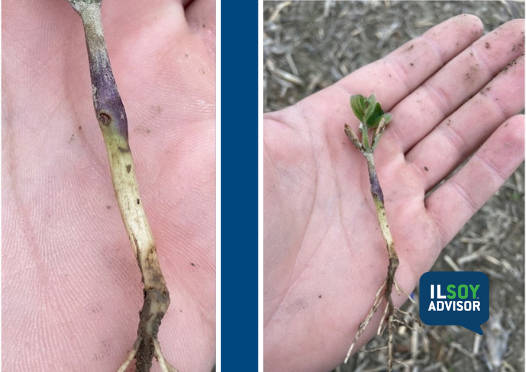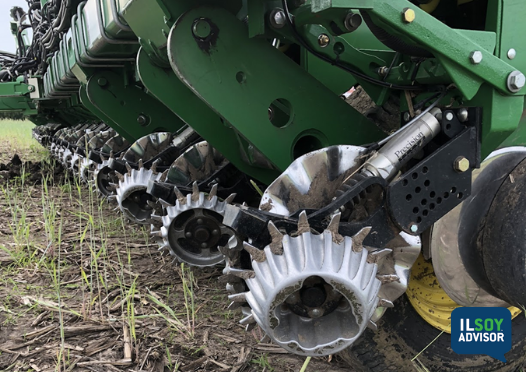ILSOYADVISOR POST
Agronomy: Sassy, Savvy and Shrewd Soybean Selection for 2017
Many of you, while you are harvesting, will also be thinking about the soybean varieties you want to plant next season. Selecting the right variety is the first key step to high yield.
Herbicide Resistance
Let’s face it, weed resistance in soybeans has reached the ultimate point of “doom and gloom.” We know that there are many new herbicide traits on the horizon, but the complicated cloud of regulation and specific herbicide use/restrictions lingers over us, reminding us that nothing is easy. We are left asking questions about approval of herbicide traits (marketing restrictions) as well as the correct use of “over the top” herbicide formulations. If there is no herbicide label, we don’t know herbicide restrictions. Amid all of this uncertainty, many are turning toward Liberty Link® soybean varieties.
Soybean Maturity
It seems like I give the same “song and dance” about soybean maturity every year, but I always have farmers ask me if they should grow a soybean maturity out of zone. The fact of the matter is that I know there will be some exceptions, but for the most part choosing the right maturity group is one of the most important decisions because soybeans are photoperiod sensitive. If a variety is chosen north of its adaption, maturity could be delayed, seedfill may occur in cool, short days of fall and frost could occur before maturity. If you choose a variety south of its adaptability, maturity could occur faster than normal, and seedfill could occur in a hot, dry July.
Area of Adaption/Spreading Risk
You may not believe me but it’s true, some varieties have a sweet spot and may be better suited to your area’s soil types or diseases. This is why you should choose soybean varieties that have been tested and proven to yield in multiple soil types and in multiple environments. The key here would be consistency. I know you can get discounts by buying in bulk, but please spread your risk by choosing soybean varieties that differ by five to seven days. I have seen short season varieties escape late season disease and fuller season varieties maximize use of the growing season for yield. Choose the right maturity range for your environment and spread the risk by spreading maturity.
Disease
What diseases usually plague your soybeans and was this because of the environment or particular soybean variety? Soybean disease and SCN are YIELD robbers! Have you tested, scouted or correctly identified these issues on your farm? Resistance or tolerance has been bred into soybeans for Phytophthora root rot, sudden death syndrome, brown stem rot, white mold, soybean cyst nematode, root knot nematode and some leaf diseases. Use of resistant or tolerant varieties is still the best method of disease control.
Seed treatment
Billions of dollars are being spent on seed treatment as insurance against disease—as well as seedling blights, SCN and now SDS—while also allowing us to reduce our seed populations. We have seen a huge increase in its use, but do you know what you are getting for your investment? Is there a fungicide, insecticide or biologicals involved? How many different fungicide mode of actions? What is the rate? Are you getting the higher or lower rate of ILeVO®? Remember, not all seed treatments are created equal and return on your investment is key. Be sure that what you are buying is helping to solve your problems.
Emergence/Standability
Yes, emergence and vigor can be linked to genetics—so look for varieties with good emergence scores—but seed quality can also come into play. Have you seen the warm or cold germination tests of the seed? Poor seed quality can lead to more disease and thus, reduction in stand, especially as we plant earlier into cool, wet environments. The standability of soybeans can be genetic, but other factors such as environment, soil conditions and seeding rate can come into play. This year soybeans were taller than ever and some had horrible lodging issues! Choose shorter varieties or those with good standability scores if you continue to have lodging issues. Yield is based on population—choose the right genetics, seed treatments and plant in the right soil and weather conditions to achieve an optimal and consistent stand.
It’s unfortunate that many growers fail to place enough emphasis on accurate product selection of soybeans. Variety selection along with environment, field placement, fertility, disease, soybean cyst nematodes, insects and weed management are all contributing factors for determining potential yield loss or gain. No one knows your fields better than you; therefore, by pinpointing the correct maturity range, pest control, agronomic traits, weed program or other management practices needed for your operation, you may not only set up the right conditions for your variety to achieve your expectations, you’ll have the recipe for success.
Stephanie Porter is a Sales Agronomist with Burrus® Hybrids with responsibilities that include educating growers and Burrus staff on all types of pests, weeds, diseases and other agronomic issues that affect corn, soybean and alfalfa production. Her territory encompasses Southern Wisconsin as well as Northern, Eastern and Southern Illinois.




Comments
Add new comment